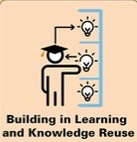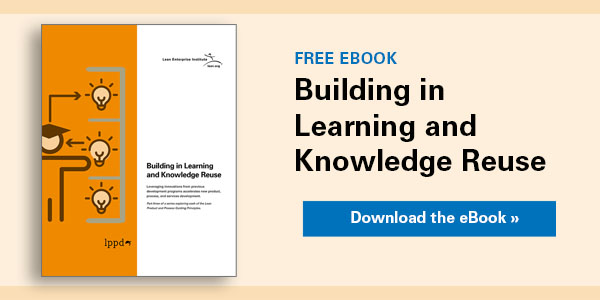“The ability to learn and then apply what you learned to innovate and improve underlies great products and great organizations,” declares Jim Morgan, LEI senior advisor for lean product and process development (LPPD). Further, he asserts that learning consists of three essential phases: discovery, capture, and the successful application of that new knowledge.
These statements highlight the importance of one of several guiding principles, Building in Learning and Knowledge Reuse, identified by LEI’s LPPD team. Led by Morgan, the coauthor of The Toyota Product Development System (2006) and Designing the Future (2019), the team has distilled what it’s learned from real-world experience and research into the principles and practices of successful development teams. By sharing the guiding principles, LEI’s LPPD team aims to help other organizations worldwide improve their development processes and build a global community that will share their experiences to advance the art and science of creating new value.
Click here for an infographic and a quick-read summary of the guiding principles.
See the Lean Post and related ebook detailing other guiding principles:
Explore the Principle Building in Learning and Knowledge Reuse
In the video below, executives from Pall Biotech, Bella, and Caterpillar describe how they used lean product and process development principles and practices to improve their ability to learn and reuse that knowledge to improve development performance.

Three Lean Posts and a downloadable ebook (PDF) offer more in-depth information about how and why building in learning and knowledge reuse is vital to your new product, process, and services development process.
- Build in Learning and Knowledge Reuse: Discover the three essential elements of organizational learning and hear how three leading LPPE practitioners describe how they’ve benefited by building learning and knowledge reuse into their development processes.
- How to Design a Knowledge-Sharing System: Encouraging learning and knowledge reuse in your development process takes more than a system to capture it — you must create a system that people will use. Here’s how.
- Learning with 10x Speed at US Synthetic: How rapid learning cycles helped the synthetic diamond manufacturer slash its idea-to-test turnaround time from 43 days to 4.5 days — and create a significant advantage in the market.
Designing the Future
An Introduction to Lean Product and Process Development.






